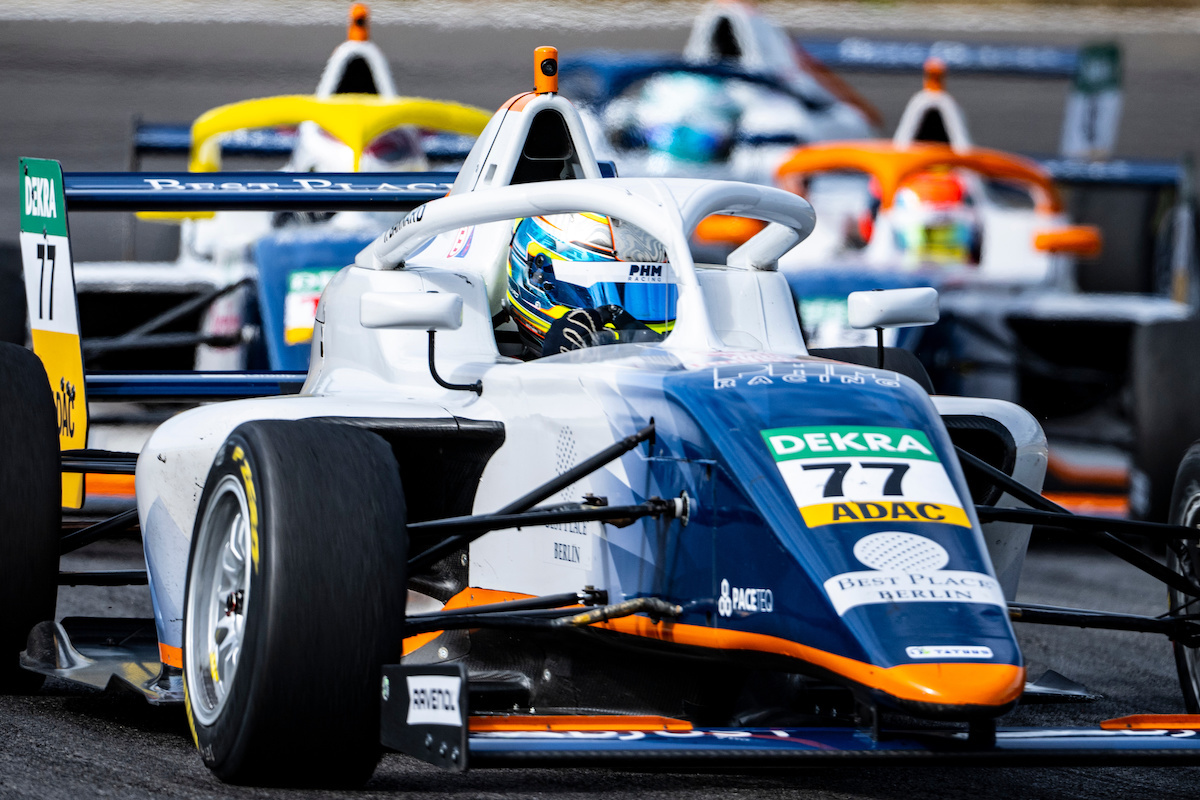
Photos: PHM Racing
Less than a year after its debut in F4, PHM Racing is preparing to expand into F2 and F3 next season. The man behind the team tells Formula Scout about its ambitious plans
The Formula 2 and FIA Formula 3 grids will be joined by a new name in 2023, PHM Racing, following the team’s takeover of the entries of Charouz Racing System. The Berlin-based team, which only made its motor-racing debut at the start of this year, has ambitious plans, not only in what it aims to achieve but, perhaps even more importantly, how it plans to achieve them.
Team owner, Paul Hanno Muller (hence ‘PHM’) spoke exclusively to Formula Scout about the team’s deal with Charouz, its ethos and the factors behind the move into the top echelons of junior single-seater racing.
Established in late 2021, PHM Racing made its first competitive appearance in the opening round of the Formula 4 UAE championship in January 2022, with Taylor Barnard taking victory in the team’s fourth-ever race.
After embarking on a dual F4 campaign in both Italy and Germany, a strong run of form over the summer gave it an outside shot at the ADAC F4 title going into the final round before ultimately having to settle for the runner-up spot in both the teams’ and drivers’ championship, the latter again with Barnard.
“Of course, I am pleased being second in the German championship in our first year and that’s something that hasn’t been done before, but, of course, this is just the beginning. This was the first step,” Muller explains.
That “next step” has now been made public with the news that PHM has acquired the entries and assets of Charouz in the two highest F1 feeder series.
Back in October, Muller, and team manager, Roland Rehfeld, had explained that while the “goal is eventually to compete in F2”, it would likely take two years for the team to be “optimally equipped.”
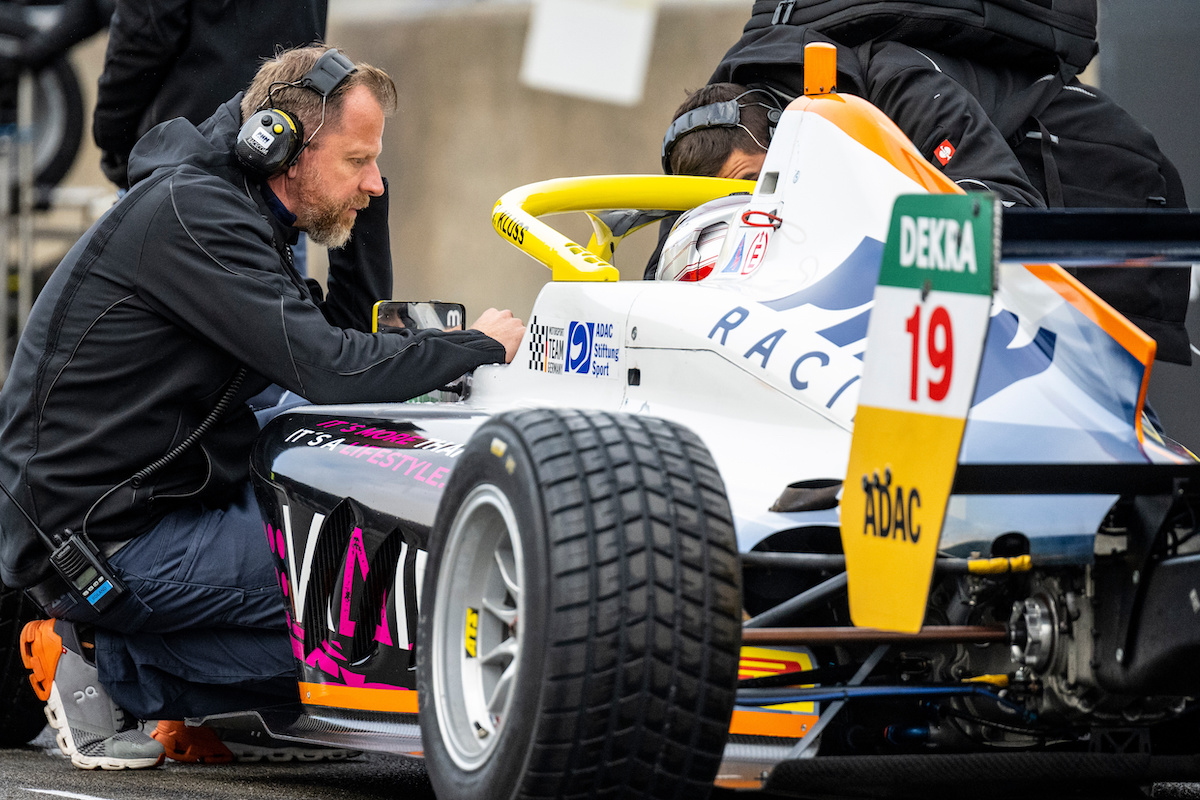
Having considered and rejected the idea of expanding into Formula Regional Europe, the team had been eyeing F3 as an interim step towards the ultimate goal, testing the waters by arranging for Barnard and F4 team-mate Nikita Bedrin to get an outing with Jenzer Motorsport in FIA F3’s post-season test at Jerez, with Barnard finishing the test on a high by topping the times on the third and final afternoon.
“Andreas [Jenzer] is well-linked in the international scene and a high integrity person, so we said: ‘This makes sense for us just to let Nikita and Taylor do their first experience with them,’” adds Rehfeld, who raced in Formula Renault, German F3 and GTs, before establishing himself as a driver coach in a 15-year spell with AMG.
But the chance to take over Charouz, while retaining access to the Czech team’s personnel, know-how and facilities for a year, “seemed like the perfect opportunity to take on even a bigger challenge like F2 even if it wasn’t in our original plan,” according to Muller.
When even established teams like Van Amersfoort Racing, who entered both categories in 2022 after replacing HWA Racelab, need time to get up to speed, how does a fledgling team, with just one year of experience on the lowest rung of the FIA’s single-seater ladder, expect to get to grips with a very different level of competition?
“Having seen the challenges that come from starting a new team and the challenges we faced in F4 and the long way that we still have ahead, to be exactly where we want to be, I think it would have been extremely ambitious to say we’re going to start doing Formula 2 [by ourselves] in 2023,” says Muller. “But the good news for us is that we don’t have to do it alone, because Charouz will be supporting us.”
For the 2023 season, “the team will be ‘powered by Charouz’,” says Muller, “meaning they will be our service partner, they’ll be bringing their engineers, their expertise of actually how to run an F3 and F2 team and we will be sitting there studying closely for the 2024 season,” when PHM intends to bring the operation fully in-house.
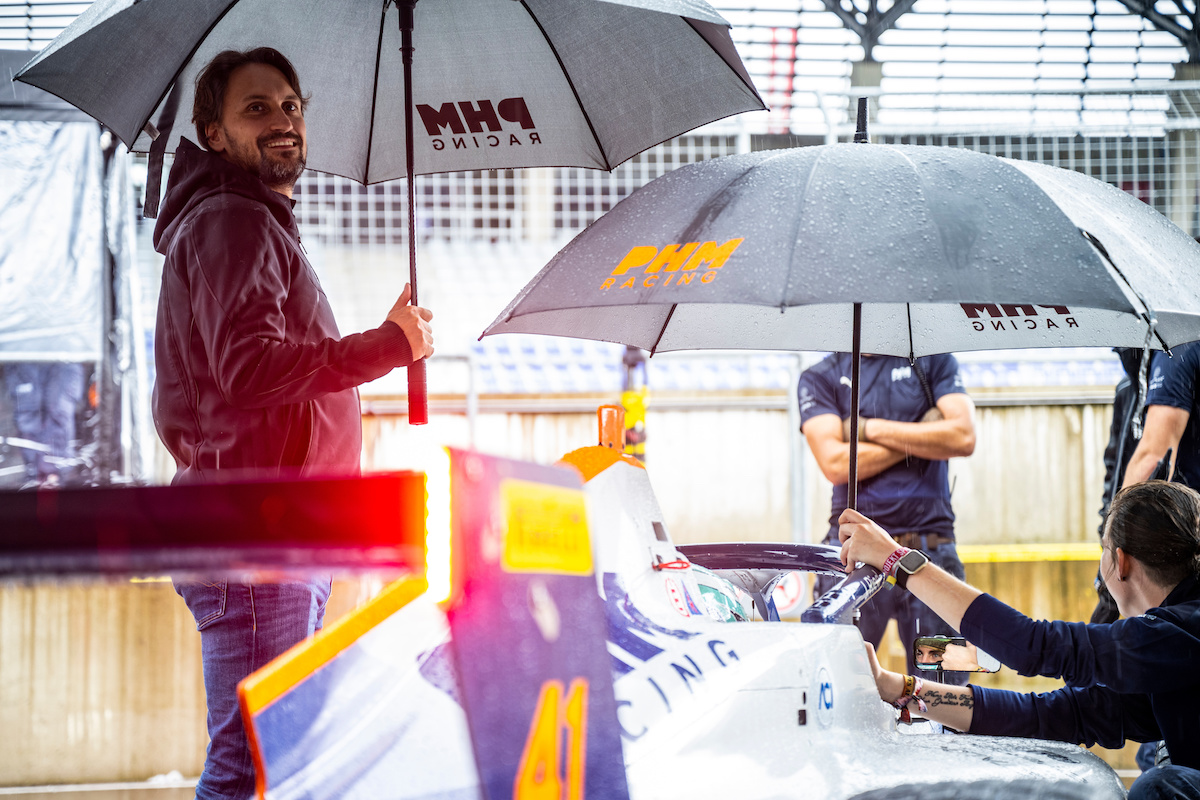
“During the negotiations with Charouz, it became clear that, from Antonin [Charouz] and the whole team’s side, they have a great passion for the sport and for them, it’s also something that they want to do, they want to compete in the championship,” Muller says.
“And for us it is a great opportunity to see them do their thing and actually learn from what they are doing. Together with Charouz, we feel very confident that we’ll be able to deliver, not just on the level of Charouz, so far, but actually enrich Charouz’s expertise and bring in some people that have agreed to advise us. We’re not doing any of this alone. I’m also just one person and from our side that is not where we have the hubris to say [that] we already know how everything works.”
Given PHM’s stated commitment to developing talented engineers and mechanics, there will be a crossover for staff working in F4. “We will be taking some of our engineering personnel specifically on the data engineering side and giving them the opportunity to have a look at F3 and get their head around that,” he adds.
“We started talking to Bruno Michel [boss of F2/F3 promoter, Formula Motorsport] about joining FIA F3 quite a while back,” Muller explains, and they negotiations with Charouz “a few weeks back after having learned that the team might be available for purchase.” The opportunity was, he says, “simply too good to miss.”
“There are only 10 F3 teams and 11 F2 teams. It’s not like you can just sign up as number 12,” explains Muller. “You always have to look at what’s the dynamic, understand where is there a team that is looking to exit the sport, where is your opportunity to enter.
“The introduction to Charouz was actually made via Bruno and Formula Motorsport and when they told us that the team might be available or might be willing to discuss a potential purchase that’s how the introduction got made and that’s how we simply started talking.”

Photo: ADAC/Gruppe C
“We presented ourselves as a new team and I think Bruno was at least sufficiently impressed with what he’s seeing and the idea of what we’re trying to do. Not to just create yet another team to just earn some money, but actually have a team that is trying to fight for victories, trying to compete and most importantly want to provide a platform for drivers to actually really have a holistic way from karting all the way up to the highest levels of formula motorsport.”
For PHM, and for Muller personally, owning a racing team is about much more than turning a profit, or even gaining short-term success on the track. “We have a different approach,” he says.
The PHM philosophy is strongly predicated on delivering improvements in performance over the long-term, on working with drivers, “to develop them as drivers, to prove a point that we can actually make them better race drivers. Putting investment in terms of time, commitment of the team, and also to develop them physically.”
Muller has set his sights on taking a young driver from karting all the way through the single-seater ranks: “When we develop drivers today our goal is to be able to carry them all the way through to F2.”
Initial plans to incorporate as a not-for-profit company were thwarted by legal technicalities arising from German corporate law but the underlying philosophy remains unchanged.
While it would be a great success “to say the team has not made a loss and actually managed to, as we say in German achieve a “black zero” [minimal profit], but it is not the main focus; my main focus, of course, to say if we look at driver development and how it is done traditionally or so far: ‘How much improvement can be made there and how much impact does this improvement have on the outcome?’
To illustrate his point, Muller relates how PHM provided an opportunity for Barnard and Bedrin to compete in F4 in 2022 despite neither having a budget for the season. Funding for Bedrin’s funding intended drive with VAR, where he had taken double F4 rookie titles in 2021, fell through in the aftermath of Russia’s invasion of Ukraine.
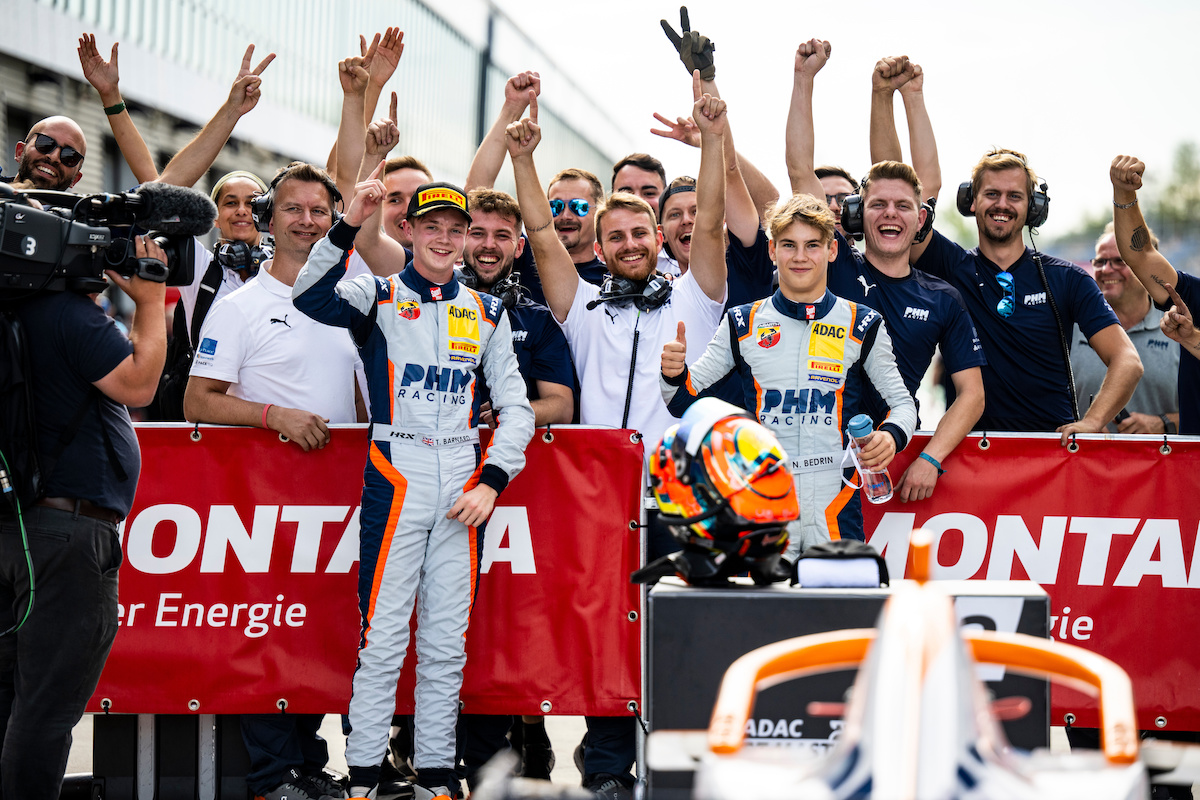
“For us it is interesting eventually to be able to take a driver who doesn’t necessarily have the biggest budget, but has the best racecraft, has the best skill and to bring them to F2.
“If I look at F2 and F3 there are a lot of drivers where the decision to get them the seat wasn’t based on skill. Which is fine. Those are the economies of the sport and I respect that, but I would rather use the economic advantages of these classes to build a team that spans all the classes, that allows me to take someone and to give them a chance to prove that not just ultra-rich kids happen to be the fastest race drivers in the world. That’s a wild theory, I know, but it gives you a different perspective.
“There’s always opportunity if you have a driver who is underserved by the current teams, to give them a shot. I think it can also be interesting long-term for the team to work with these guys.”
As part of the overall plan to build an escalator for talent to develop, F4 will remain “an integral part” of PHM’s portfolio. Indeed, says Muller, “for us, the work of finding the drivers for F3 that want to, or that we believe can take a title starts in F4.”
Muller explains that the idea was always to “create a platform that gives drivers the ability to come from karting and get all the way to the doorstep of Formula 1. That means for us, F4 is a must-have. Of course, it is a very different championship than F3 and F2 and it has its own challenges, but for us it is an important part of the driver education. Nowhere else does the driver get as much seat time in as many races as in F4.”
Next year, PHM intends to run “five cars, hopefully, in the UAE,” and then “all the way up to six cars in the summer next year in the [Italian] F4 championship,” although no final decision has yet been taken on the ADAC F4 championship, pending the publication of a calendar. “But currently our plan is definitely to repeat what we’ve done this year. We’ve seen it very successful in terms of the driver education.” In addition, the team intends to use an entry into the Formula Regional Middle East Championship as an extra training ground prior to the FIA F3 season.

While Enzo Fittipaldi has demonstrated the potential of Charouz’s F2 car with three second places this season, the team has endured a trying season in F3 with just a single point to its name and a distant last in the standings. The constant rotation of occupants of the team’s number 15 car saw six different drivers take the start. Clearly, not an ideal basis for success, as the track personnel struggled to keep track of who was on board on any given weekend.
The financial demands of the sport have made it ever harder for small teams like Charouz to compete. Muller is fully aware of the size of the investment that will be necessary to compete at the highest level against the top names in junior single-seaters.
“Of course, we are looking to see what needs to happen in terms of the whole workplace. The investments in total are definitely in seven figures, how much exactly we will see.”
For 2024 and beyond, PHM is looking to relocate the team to its own premises, most likely in its current 1,300m2 base in Ehingen outside Stuttgart. “I guess the main focus of the investments will be naturally made in Ehingen. But we have the luxury to have some time to have a look and see where the spots [are] within the team, [and] where we want to focus on investment,” he says.
Despite the “good starting point,” PHM is not blind to the investment levels required – “you don’t run in blindly and just assume that everything would work out of the box.”
“The main cost will,” he believes, “be creating the whole factory workshop to make sure that we can have the tooling to retrofit the cars at the end of the season, to do all the necessary maintenance and operations.”
“The good news is that the team, of course, isn’t primarily restrained by its financial situation. For us having a long-term plan and making smart long-term investments is the more important focus. And I think the big, big investments we’re looking for and where we’re already talking to partners will be the facilities to prepare and train the drivers specifically in the simulator department.”

With the advances in sim technology in recent years, Muller believes there are “great offerings in the market that can give our drivers absolutely a competitive edge.”
So, exactly how competitive does Muller expect to be? For 2023, the goal is “to learn the ropes, and to understand what this championship takes,” with a focus on performing “to the best of the ability of the team, understand and learn everything we need for the 2024 season.”
“Of course, it would be great to right away look at podiums and wins,” he admits but acknowledges that “if that happens, I would say this would be a very, very lucky thing for us.”
“But in year two, my expectation would at least be to have the occasional podium and maybe a win here and there, and then maybe two or three years later on, to actually start looking at a situation where we could challenge for a title.
“All of this is, of course, always heavily dependent on the set of drivers that were able to get.”
Which brings us to the question of the driver line-up for 2023. At this late stage, most driver deals are close to finalisation, if they have not already been signed.
Given the much-repeated mantra of working with drivers’ long-term careers, there is no doubt that PHM would love to be able to promote Barnard and Bedrin internally to the F3 squad. Muller agrees: “We have two drivers that are ready to make the step into F3 and that means that F2 is a completely new field to us and of course a lot of the driver negotiations have already progressed at the point where we acquired a team.
“So, what you’re gonna see is basically a hybrid situation of Charouz’s ongoing negotiations and programme and the drivers that they’ve been in contact with and our wishes and plans for the next year,” with the team then focusing on bringing “our own talents into the 2024 F2 seats.”
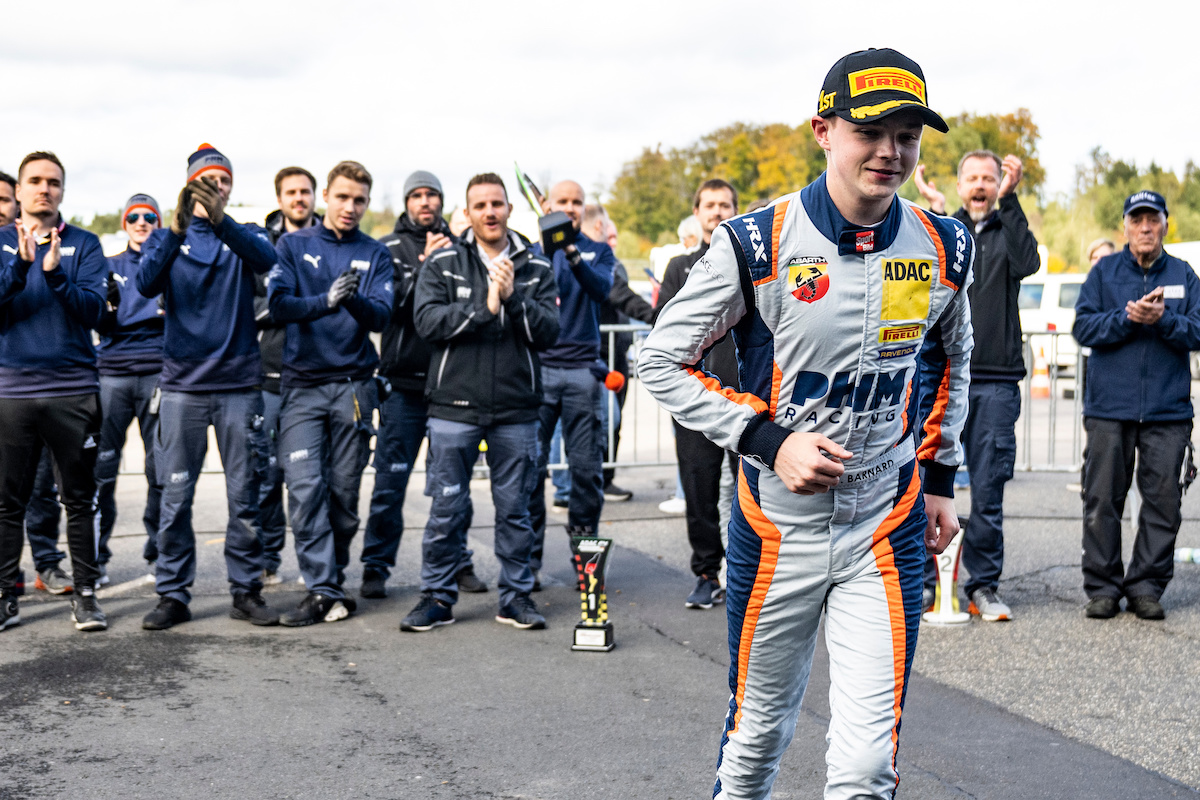
Muller says that his passion for the sport stems from spending Sundays when growing up sitting “in front of the TV and hearing a howling, Ferrari V10 of Michael Schumacher winning world Championships, which was like church.”
“I think, ever since then I had this bug for racing, but specifically formula racing. The idea of having simply a purpose-built machine, that is just the fastest thing that can go around the track without any compromise is something that has always appealed to me, and as my education later on was more engineering-focused as a software engineer and my career path as well.”
Muller started his first business at the age of 23, rapidly growing in the emerging app business. “Apple had just produced the first iPhone and had introduced the App Store. My first company actually started making apps and became incredibly successful. We had something like 15 million downloads with various kind of entertainment apps and had built a lot of different tools for publishers to understand how their marketing works.”
On the back of that success, he founded and attracted funding for a start-up, Adjust, “an analytics platform providing solutions to help marketers grow their mobile apps”, to quote the company’s website. Adjust was recently sold “for over a billion dollars.”
“I just had an incredible journey of 10 years, going from three people in a dinky little flat in North Berlin to an international company with 700 people and more than $100 million of revenue every year.”
He is, he says, “still relatively young, despite all the grey hair! That comes from 10 years in a start-up business, that’s kind of stressful,” he adds jokingly.
To Muller as a tech innovator and entrepreneur, many traditional racing teams strike him as “very strict, very hierarchical, very old school… I feel that there there’s a lot more things to be learned from how modern companies organise themselves, how management looks like and how the hierarchy and processes look like.”

Having said that, “a lot of the things that I’m seeing are transferrable in terms of the management style, how management works, how you give people the opportunity to prove themselves,” between a “company that produces a software or company that produces racing events.”
He does believe that the tech sector can provide insights into greater automation of processes in the racing world and wider application of software through all the team’s operating processes.
One aspect of the “non-virtual” world of motor-racing that Muller has had to get used to is ‘dealing with physical things like cars being shipped around and having to buy things like spare parts, materials and tools, [which] is certainly a new experience specifically in this current situation.”
PHM aims to “create a platform that through its sheer success can attract sponsors that understand that the sponsorship is not merely to enrich an individual but actually provides a platform for young people that normally do not have this opportunity to go and race in the highest classes of motorsport.”
Muller is optimistic that the vision can be realised, “but until then I’m willing to support the team on this journey.”
“We are here, we’re serious,” he emphasises. “We’re not doing this as investors to take over the team. We want to go racing and we want to win, and I think that’ll be the deciding factor.”
There is clearly no lack of vision, passion or audacity in PHM’s bold plans. At the end of the day, it is, however, results on track which will determine the success of the karting-to-F1 driver development model.
But with budgets at all levels of the junior ladder increasing year-on-year, additional support for fast-but-penniless talents can only be welcomed.
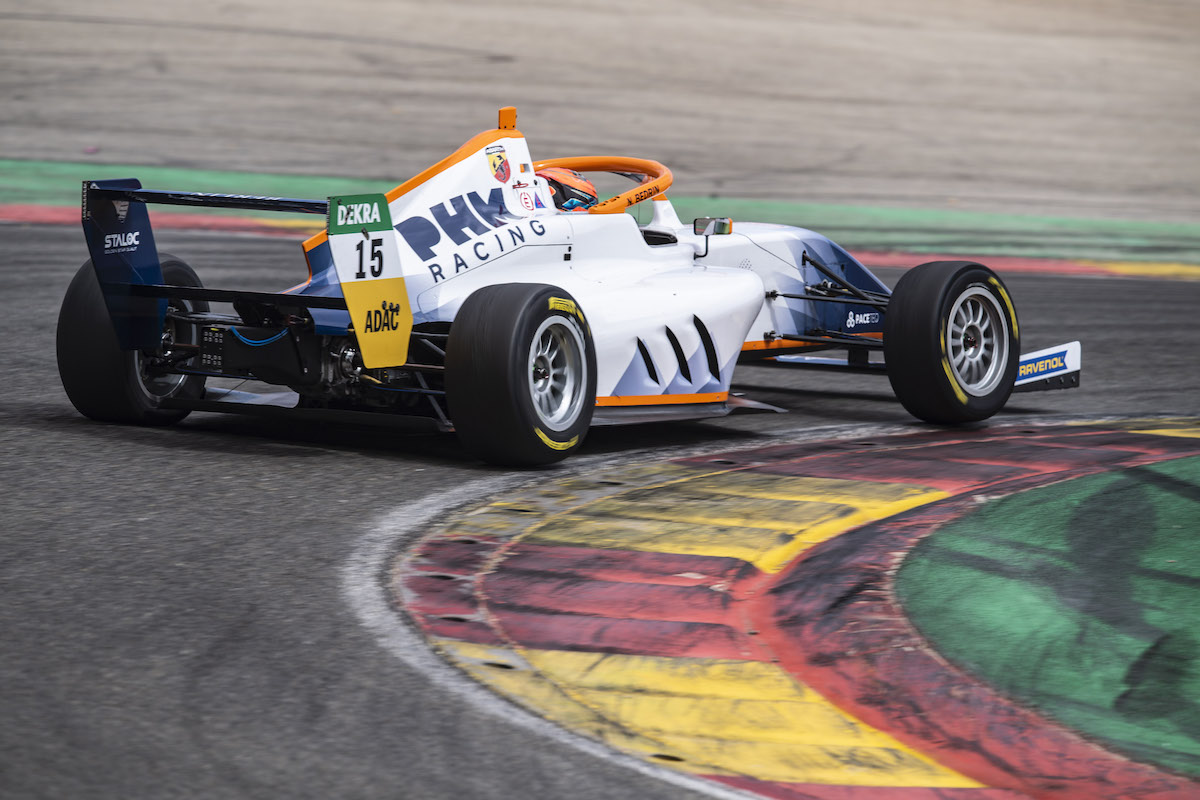
Photo: ADAC